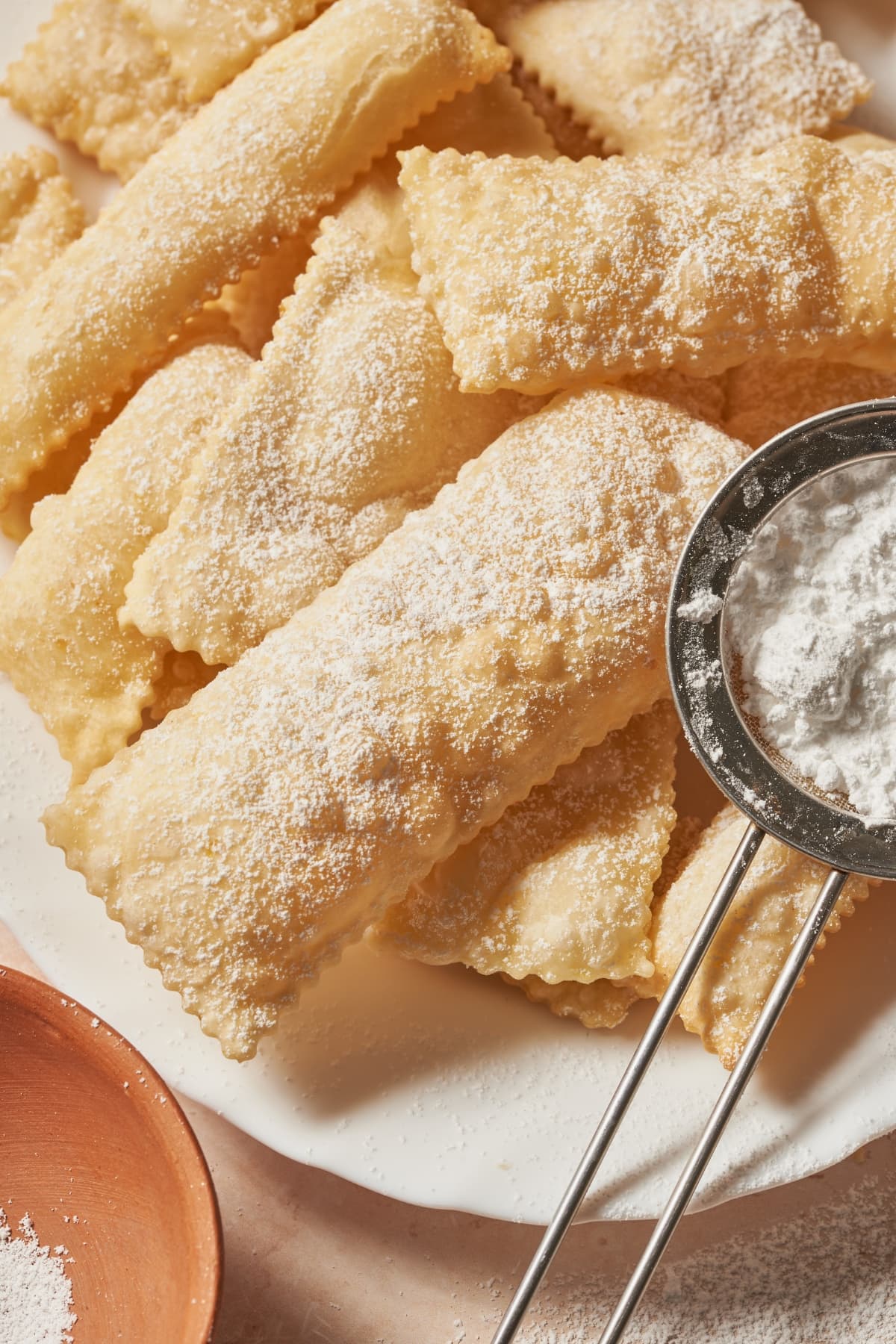Crispy, crunchy, sugary crostoli are a sweet treat from the area around Venice in Northern Italy.
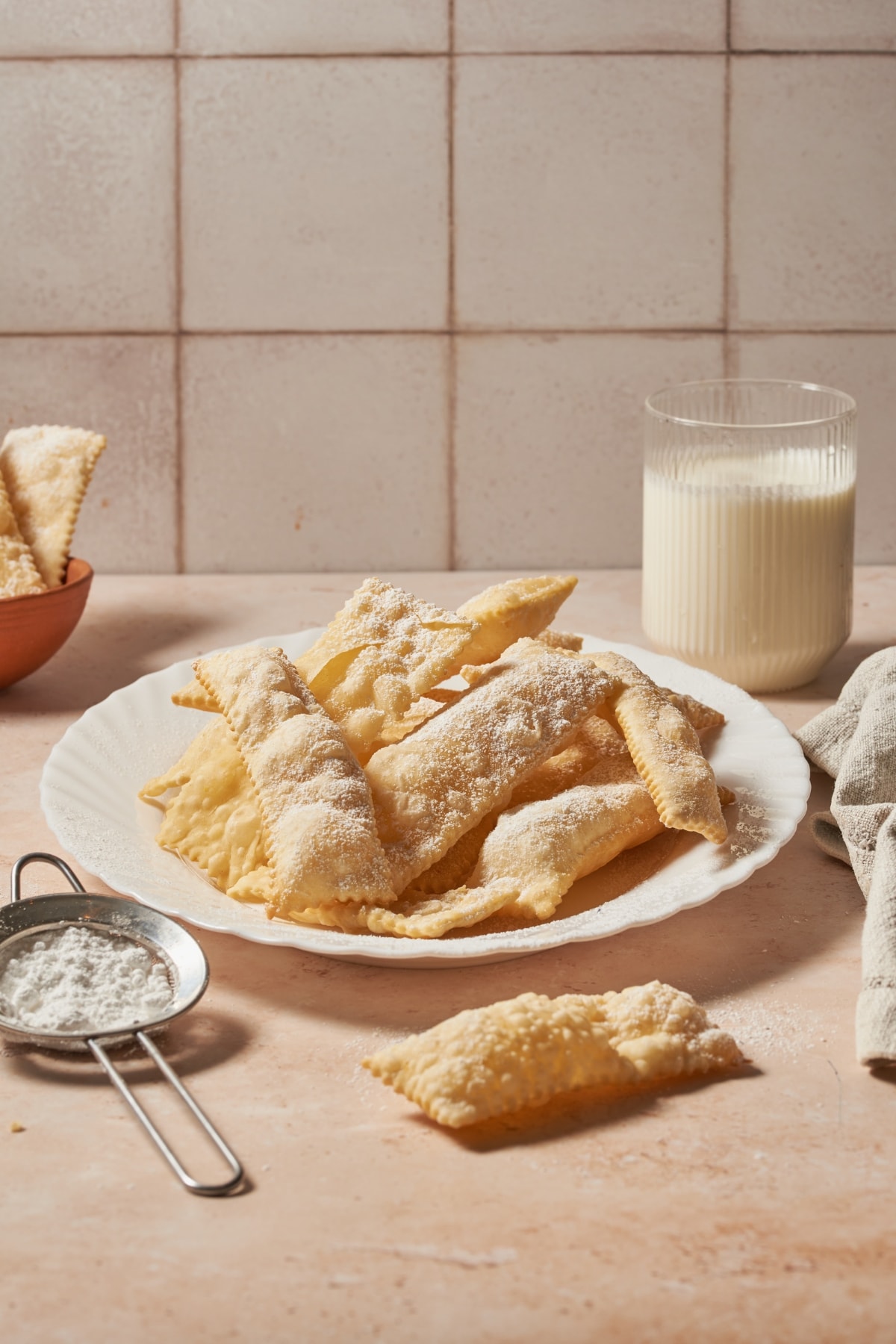
They are made from flour, egg and sugar and then the dough is rolled out very thinly and cut into strips before being deep fried in oil and getting a generous sprinkling of powdered sugar on top.
These delicious sweets are sold in bakeries and street food kiosks during the Mardi Gras carnival season, more or less the entire month of February, (depending on when Easter falls). They go hand-in-hand with happy costumed children running through the squares of small towns tossing confetti at each other as parades go by.
Crostoli are popular to make and eat in Central Italy and the rest of the country as well, where they go by different names such as cenci, frappe, bugie, galani, chiacchiere and many others depending on which town or city you happen to be in.
But beware, these carnival sweets are as delicious as they are messy- you will most likely end up covered in a fine dusting of powdered sugar before you’re done eating them!
Here is what you will need to make these crispy, golden sweets covered in icing sugar.
The whole process to make this crostoli recipe takes almost exactly one hour from start to finish, including rest time for the dough, and then they can be enjoyed right away with a generous amount of powdered sugar sprinkled all over them.
This crostoli recipe calls for basic dessert ingredients like flour, sugar, butter and egg, but you might be surprised to find grappa is a part of the recipe too!
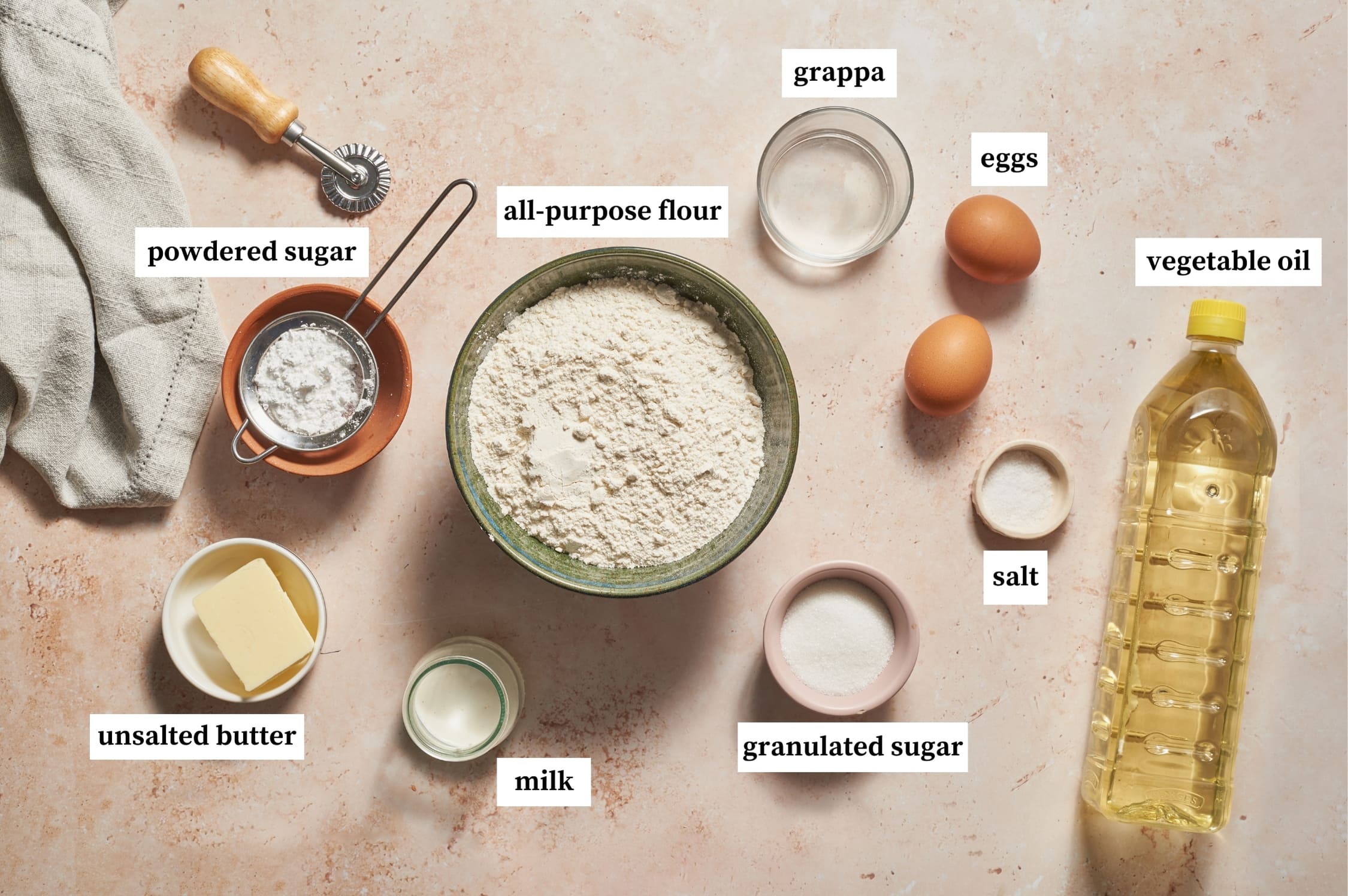
To prepare the dough, first add the dry ingredients of flour, white sugar and salt in a mixing bowl and make a hole in the center (photo 1).
Put the eggs, the melted butter and the grated lemon zest in the hole and stir together with a fork, starting from the center, to combine until creamy (photo 2).
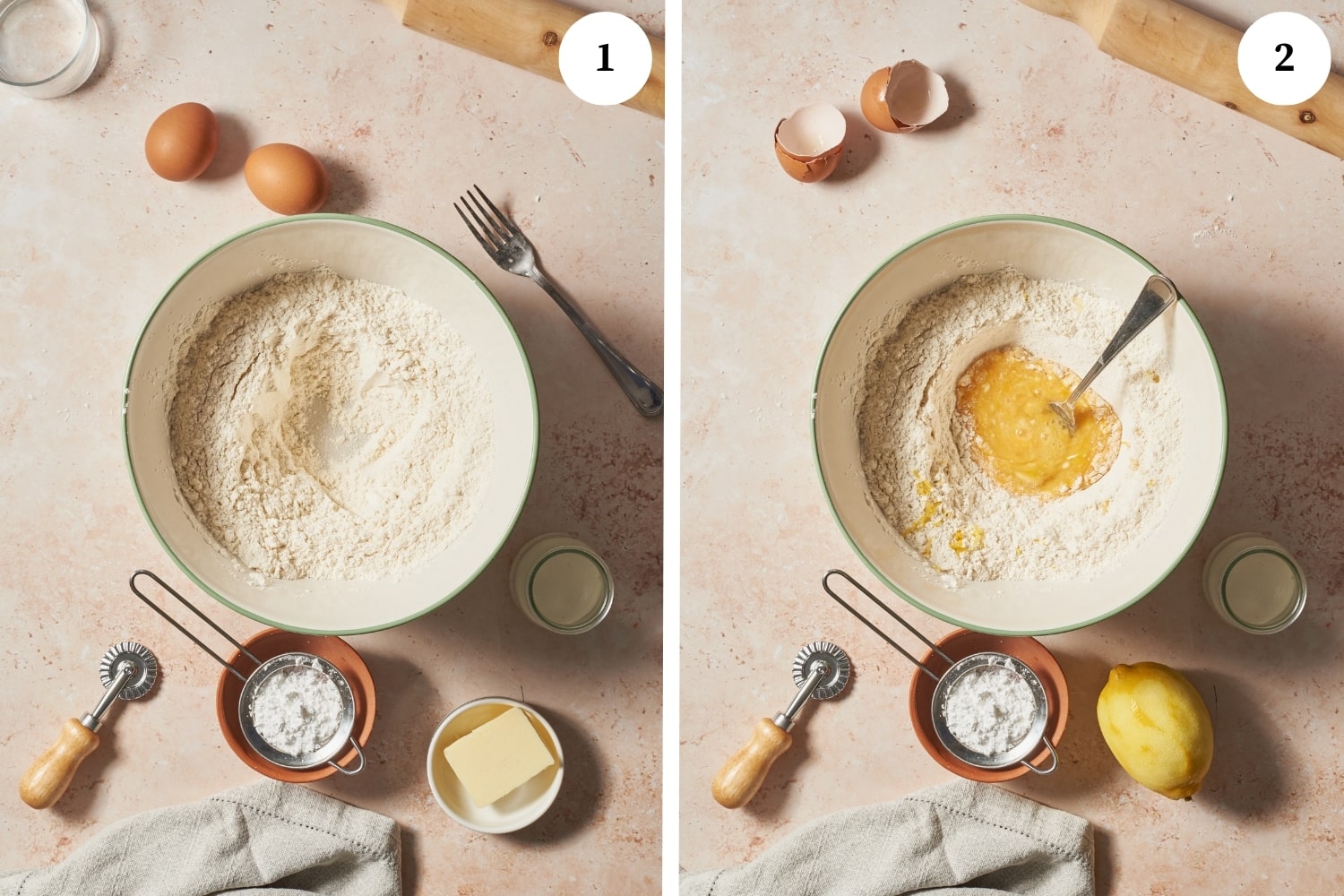
Now add the grappa or other alcohol of your choice into the center and incorporate it using a fork.
When the dough is a little more solid, you can transfer it to clean work surface and knead it by hand, folding and pushing until it is homogeneous. If it’s too hard, you can add a very small amount of milk (up to 2 tablespoons).
Form it into a smooth ball, cover it with plastic wrap, and let it rest at room temperature for 30 minutes (photo 4).
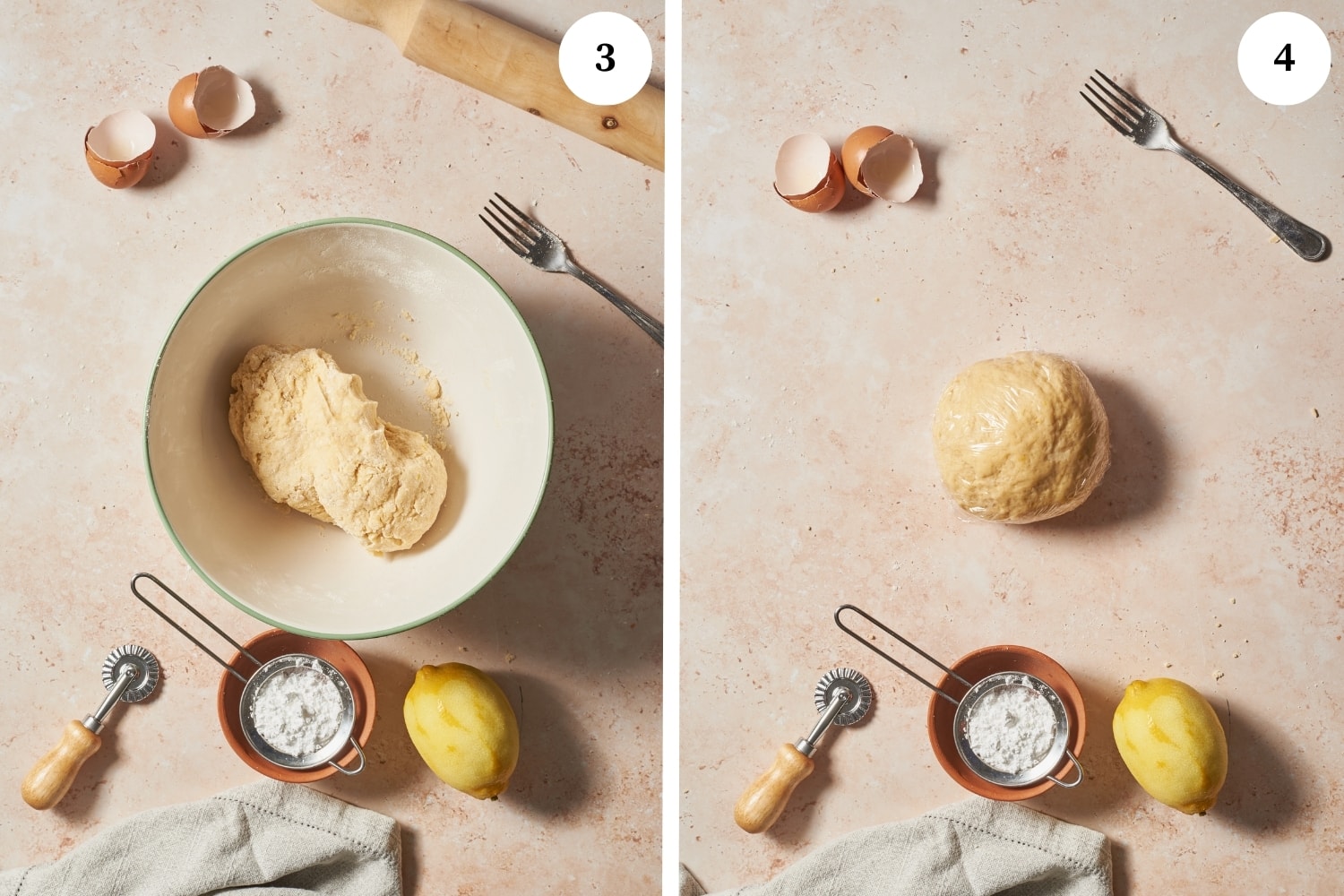
To roll out by hand: Divide into 5 parts, roll the dough out one piece at a time. On a well-floured flat surface, roll out one part with a rolling pin until the sheet becomes as paper-thin as possible (photo 5). Fold it onto itself and roll out again several times to get long straight strips as well as lots of bubbles when frying (photo 6).
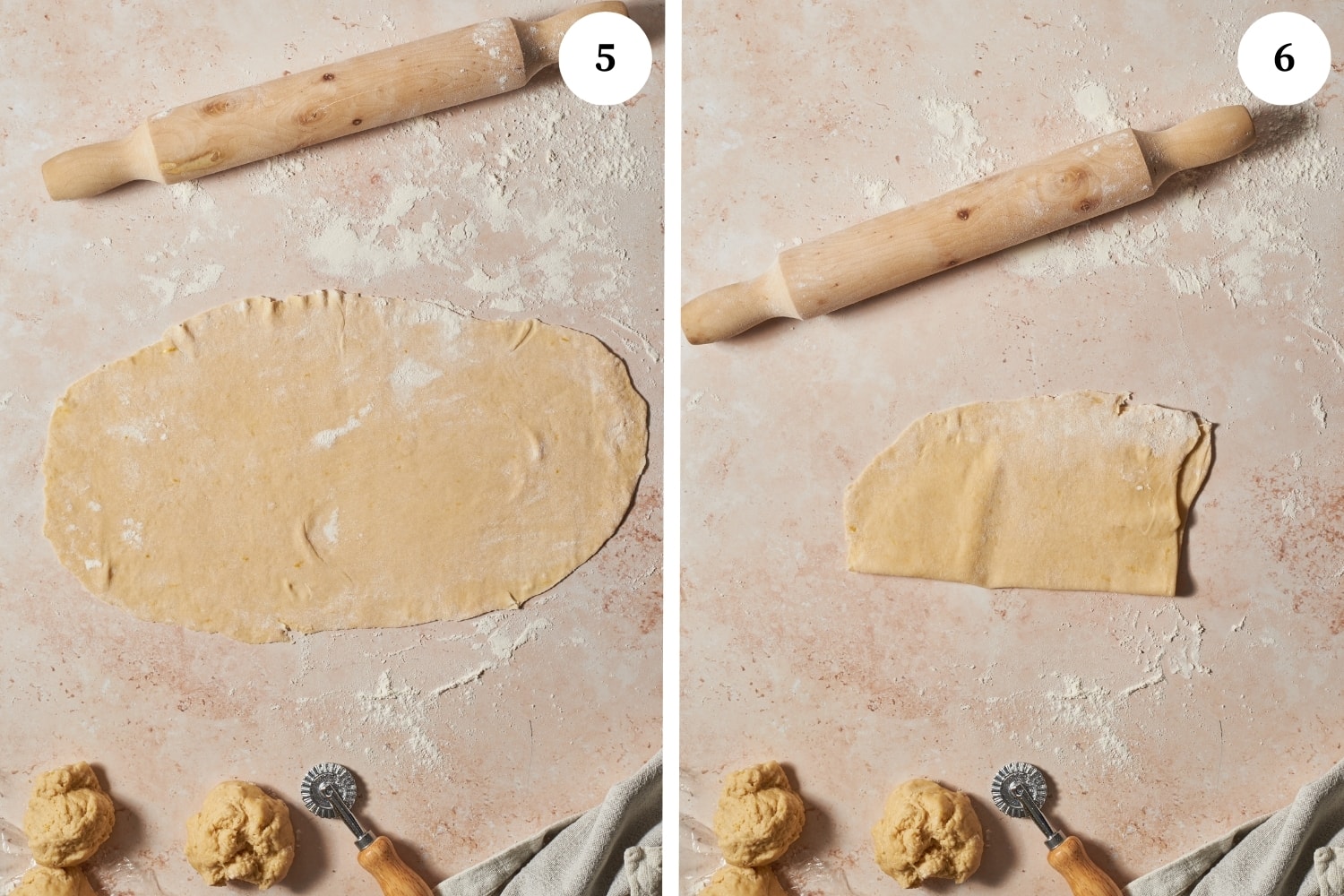
To roll out with a pasta machine: Cut into five parts. Take one piece and flatten it with your hands to a length of about 10 to 12 cm. Now insert it into the machine set on medium (usually number 3 or 4) or even the widest setting and roll it through. Fold in half and put it through the machine again. You will then set the machine to either 1 or 2 (the thinnest settings) and put it through several times until the sheet is thin, nearly sheer.
To cut the shapes: Using a fluted pastry roller, cut along the edges of each sheet of pastry to make them even (photo 7) and then cut the dough into individual medium-sized rectangles (photo 8) (you can also cut on an angle). Place each even rectangle on a lightly floured cutting board or large plate spaced out so they don’t stick together. Some recipes say to cut a slit lengthways, in the middle of the crostoli, but this is optional.
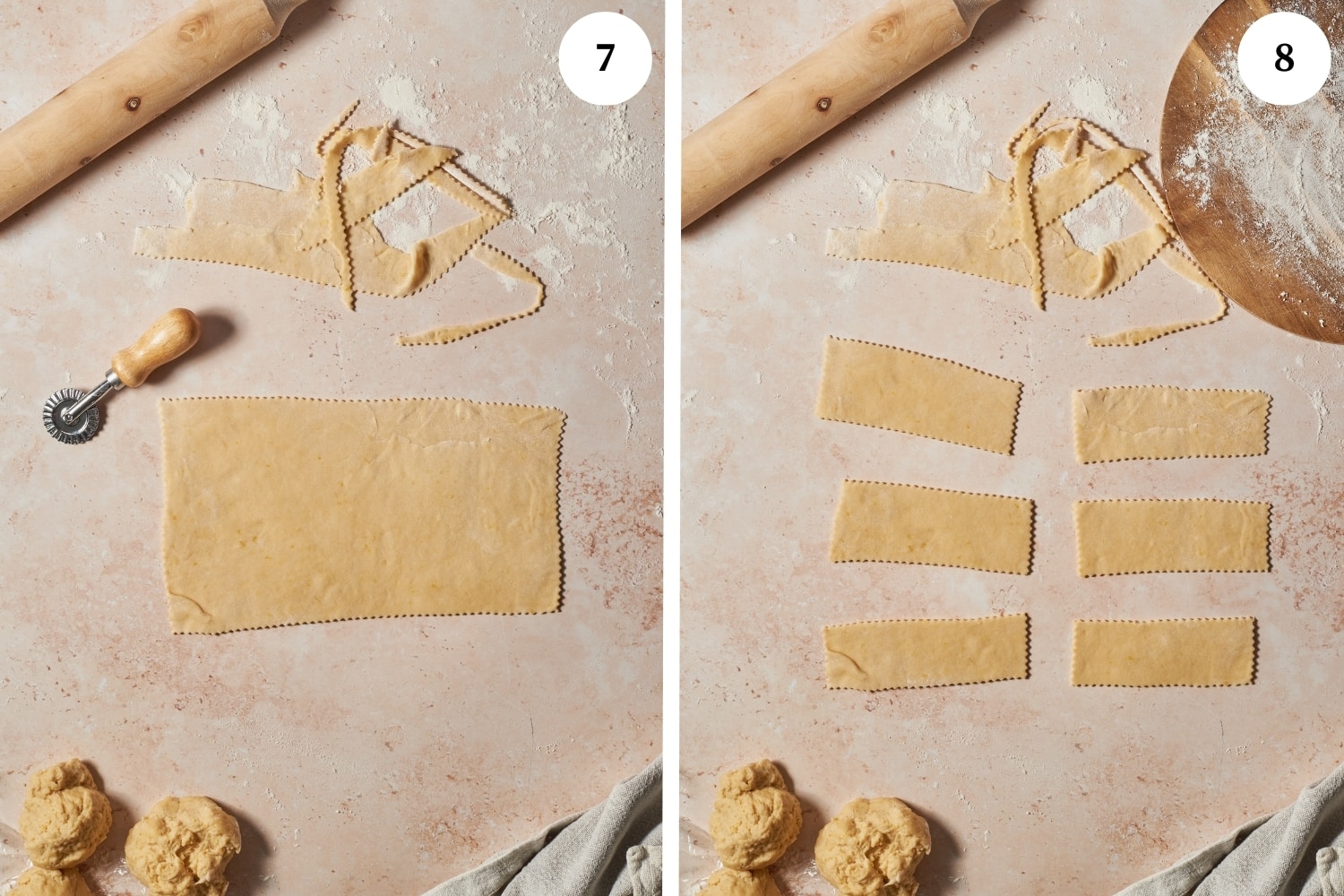
To fry: Use a deep fryer or, if you prefer, a high-sided medium-sized saucepan. Fill it with the oil and heat over high or medium heat until it reaches a temperature of 175° C. You will know the oil temperature is right when you do a test to see if a small piece of dough begins to sizzle and fills with bubbles.
Start frying when the oil is ready and at the ideal temperature. You can cook in batches a few pieces at a time in the hot oil for 30 – 40 seconds per side. They will immediately puff and fill with air bubbles (photo 9). Remove the crostoli with a slotted spoon when they are golden but do not let them turn brown. Place them on a paper towel to remove excess oil (photo 10).
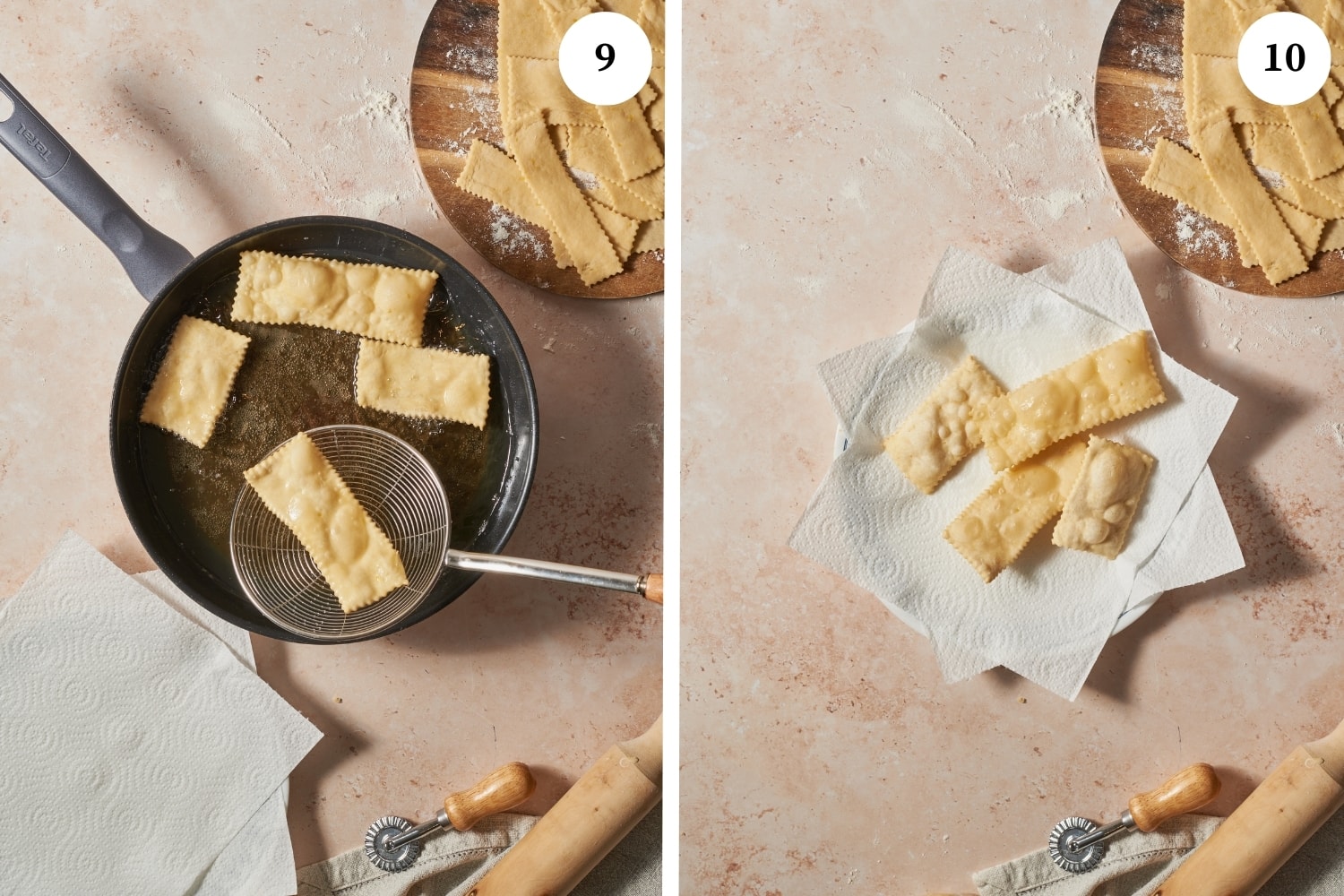
Finally, dust with a generous amount of powdered sugar and enjoy eating crostoli immediately.
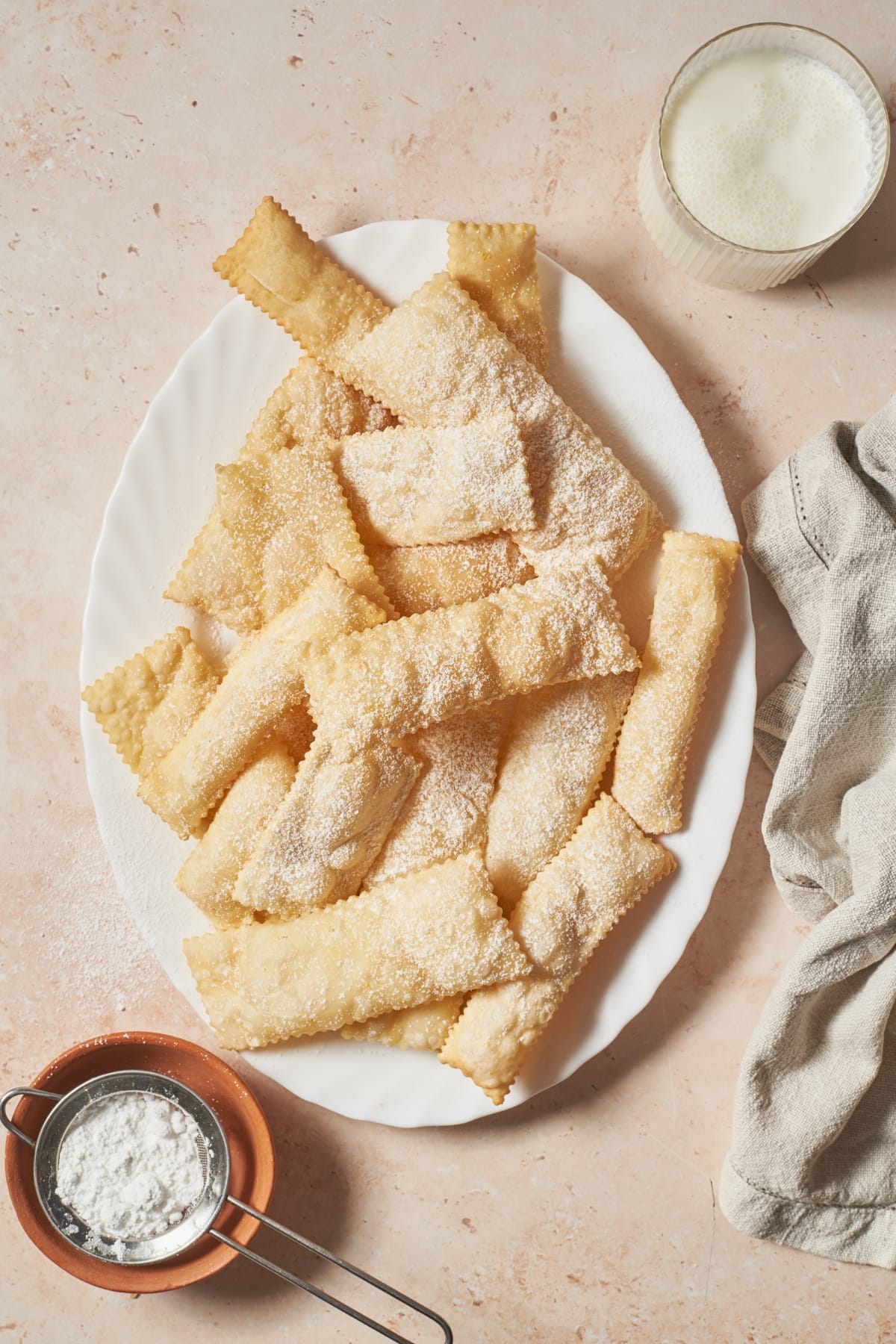
Other festive recipes for you to try:
Once the crostoli have completely cooled, store them in an airtight container in a cool dry place for up to 3 days.
Yes, you can freeze the dough as a ball. Completely cover it in plastic wrap and freeze for up to 1 month. Let it defrost slowly in the fridge and then work the dough a little with your hands to soften it up completely before putting it through the pasta maker or rolling it out to form the crostoli themselves.
Carnival is a Christian celebration which happens over about a month long period in February or sometimes early March, depending on when Easter falls that specific year. The carnival season is filled with parades, parties, and public celebrations culminating in Mardi Gras, which is “Fat Tuesday” the wildest party before Lent begins the next day on Ash Wednesday a period of fasting.
